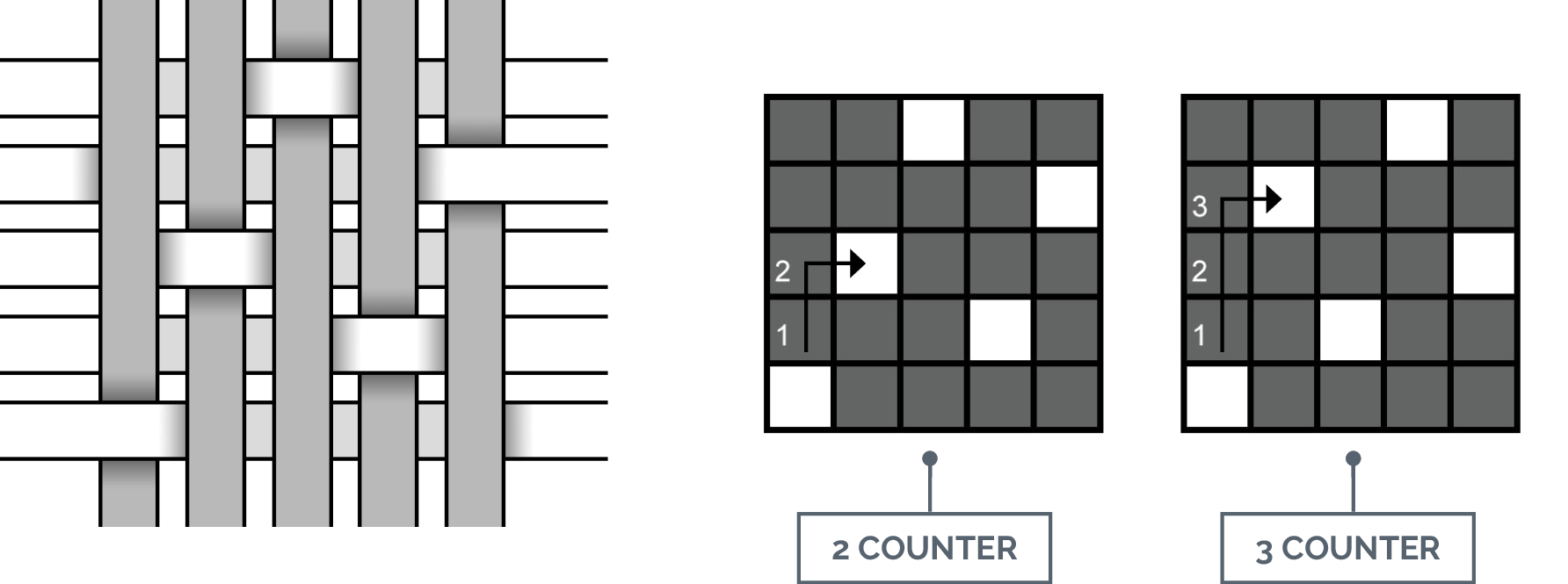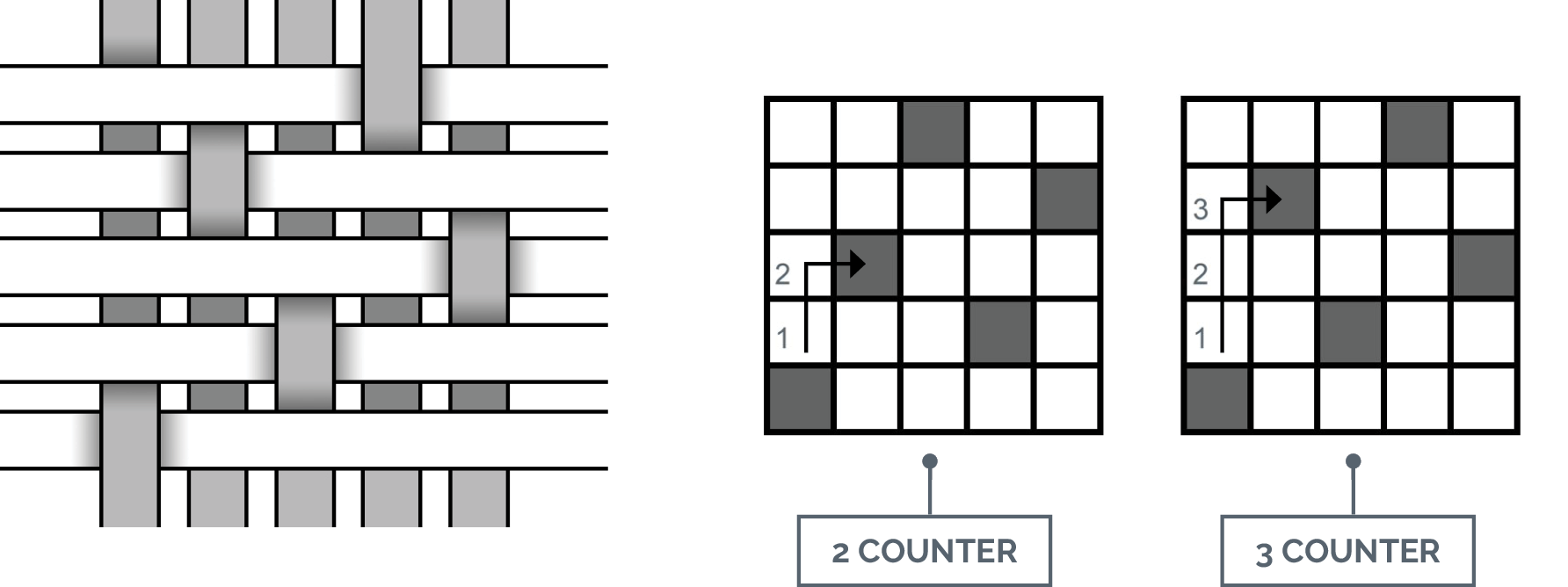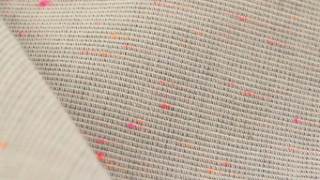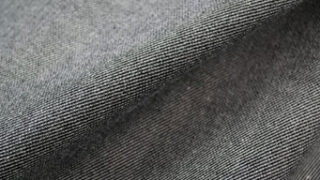Satin Weaves
Appearance of Satin Weaves
Satin is one of the three basic weaves, similar to a twill, but the intersection points are irregular so as not to form a twill line in the fabric.
The satin weave is known for its smooth and lustrous surface. This is due to the many long floats in the fabric design, where no interlacing points touch one another. Satin weave fabrics have excellent drape but can have problems with picking, snagging, skew, and seam slippage.
Satin Weave Variations
Sateen
The terms satin and sateen are often confused. Satin fabrics are woven with silk yarns in a satin design, and sateen fabrics are woven in a satin design with any fiber other than silk.

Satin

Sateen
Warp-Face Satin & Filling-Face Satin
In some instances, warp-face satin is referred to as a satin fabric and filling-face satin as a sateen fabric. Warp-face satin fabric has long floats in the warp direction, and filling-face satin (or sateen) fabric has long floats in the filling direction.

Warp-Face Satin (Satin)

Filling-Face Satin (Sateen)
Five-harness satin weaves. The long float in a satin weave is tacked down at seemingly random intervals which helps create the lustrous surface. The arrangement of the interlacing points is determined by a counter, a set number that dictates how far from the previous interlacing point the next one will be positioned. In a 5-harness satin, counters can be either 2 or 3, meaning that from the first interlacing, the next warp yarn interlacing is placed 2 or 3 picks above.
Satin Harnesses
Satin weaves are classified by the number of harnesses used to weave them. The simplest and most common satin weave uses 5 harnesses. The harnesses are sometimes referred to as shafts. Each end in the repeat weaves differently, therefore the number of ends per repeat will be the same as the number of harnesses required to weave the fabric.
Satin may be made using as few as five harnesses and be made using as many as sixteen.
5-Harness Satin
The 5-harness satin is the most common. In the 5-harness warp satin, warp yarn 1 sinks under pick 1 and rises over the next 4 picks. This pattern repeats vertically over the same warp yarn. The second warp yarn rises over the first two picks, sinks under pick 3, and rises over picks 4 and 5. It’s easy to see that the sinker or binder moves up two picks instead of one as with a twill. Satin counters must never touch. If they do, then the weave is some type of twill. In subsequent warp yarns (3, 4, and 5), the sinker moves up two picks. This movement of the binder pick is referred to as a counter, therefore this satin has a two counter. The pattern repeat has 5 ends and 5 picks. This 5-harness satin has a 3 counter, notice that warp yarn 2 moves up three picks for the binder. The only possible counters for a 5-harness satin are 2 and 3. Counters 1 and 4 will not work because if the counter is either a 1 or 4 then the weave will be a twill.
8-Harness Satin
With the 8-harness satin weave, a 3 or 5 counter is possible. With a 3 counter, the first warp sinks for the first pick and rises for the next 7 picks. The next warp end moves up three warp ends for the sinker. The subsequent warp ends (3, 4 5, 6, 7, and 8) follow the same pattern. If a 5 counter is used, then on the first end the first pick is a sinker followed by 7 floating picks. The next warp ends move up five picks for the sinker. The subsequent warp ends (3, 4, 5, 6, 7, and 8) follow the same pattern of moving 5 picks before weaving the sinker into the fabric.
TERMS TO KNOW (click to flip)
One of the three basic weaves, which is similar to a twill, but the intersection points are irregular so as…
view in glossaryWoven fabric with a smooth and lustrous face without any appearance of pattern formation. Satin is the weave while sateen…
view in glossaryA satin weave that uses five harnesses to weave the pattern. A total of five warp and five filling yarns…
view in glossaryA satin weave that uses eight harnesses to weave the pattern. A total of 8 warp and 8 filling yarns…
view in glossary

